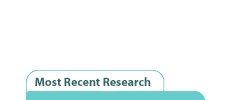A behavioral research team announced today that it has doubled the recovery rate for drug addicts in a study that gave patients feedback on their brain's electrical activity in conjunction with conventional treatment for drug abuse.
William C. Scott, principal investigator of the study, said that across the country, drug rehab programs have generally achieved a success rate of 20 to 30 percent in relapse prevention one to two years following treatment. In the current study, in excess of 50% of experimental subjects remained drug-free a year later.
The study used neurofeedback, a technique that trains patients to alter their brainwave patterns as they receive information about those patterns. The researchers placed electrodes on patient's scalps and displayed the brain's electrical activity on a computer monitor in the form of an audio-visual exercise. The feedback process informed patients about their success in making changes.
"Beyond the scientific implications of this study, which are exciting, the real significance is the hope it offers addicts, their families and our communities," Scott said. "For those who've tried and failed, here's a result that says, 'try again, there are new possibilities.' For families and communities, it's another opportunity to free ourselves from the specter of drugs."
The pioneering study was a collaboration between CRI-Help, a North Hollywood in-patient drug and alcohol rehabilitation facility, and EEG Spectrum, sponsor of a nation-wide network of neurofeedback providers. The research team released its preliminary results today at the annual meeting of the American Association for the Advancement of Science because of the potential public policy implications.
Expressing his hope that other researchers would move quickly to duplicate the study, Scott said the research team would release a final report within the next year upon completion of a full two-year post-treatment follow-up.
Following a standard controlled research design, researchers from EEG Spectrum and CRI-Help organized 135 drug rehab patients into two matched groups, one experimental and the second a control group against which the test subjects could be compared. Both groups received treatment based on the Minnesota Model, a 12-step oriented program supported by group, family, and individual counseling. The experimental group also received 40 to 50 neurofeedback sessions directed toward improving cognitive function and mood regulation. Controls received additional individual and group sessions.
In addition to improving the success rate for recovering addicts, the study documented significant improvements in the ability of the experimental group to focus their thinking and process information. Moreover, the experimental subjects exhibited significant improvement in some relevant measures of psychological functioning (Minnesota Multiphasic Personality Inventory [MMPI-2]). These gains may help to sustain the subjects in the ongoing recovery process.
Scott points out that most drug addicts are simply not either mentally or psychologically "available" for drug rehab therapy. This results in considerable attrition in conventional programs as addicts abandon treatment. A key finding in the current study is that the addition of neurofeedback training to conventional treatment reduced patient attrition significantly. After only 45 days of treatment, nearly one-third of the control group had opted out of treatment prematurely and left the residential facility, compared to only 6% of the experimental group. Scott said, "Any form of treatment which reduces the dropout rate becomes a valuable rehab technique."
David A. Kaiser, Ph.D., the experimental psychologist who designed the study, noted that this work complements earlier findings on the efficiency of neurofeedback in aiding recovery among severe alcoholics. The present study extends these findings to opiate abusers, multiple-drug abusers, and users of stimulant-type medications such as methamphetamine and cocaine.
Siegfried Othmer, Ph.D., chief scientist at EEG Spectrum, said that to his knowledge this is the first large-scale, carefully controlled study to date that measures the effectiveness of neurofeedback as a treatment for drug addicts. "I think these remarkable results should motivate other researchers to replicate our findings in large-scale populations," he said.
The study was initiated by Marcus Sola, Chairman of the Board of CRI-Help. In reflecting on the results, Sola said: "It must be recognized that we are dealing here not with typical research subjects but rather with the most difficult type of addict currently in rehabilitation." Most had been assigned to CRI-Help by courts, or their care was otherwise mandated. "To have observed this kind of improvement over what we consider to be a model, state-of-the-art program already is simply remarkable." Sola believes the conclusion to be inescapable that when these results are confirmed in other studies, "they will change the standard of care in the field."
|


